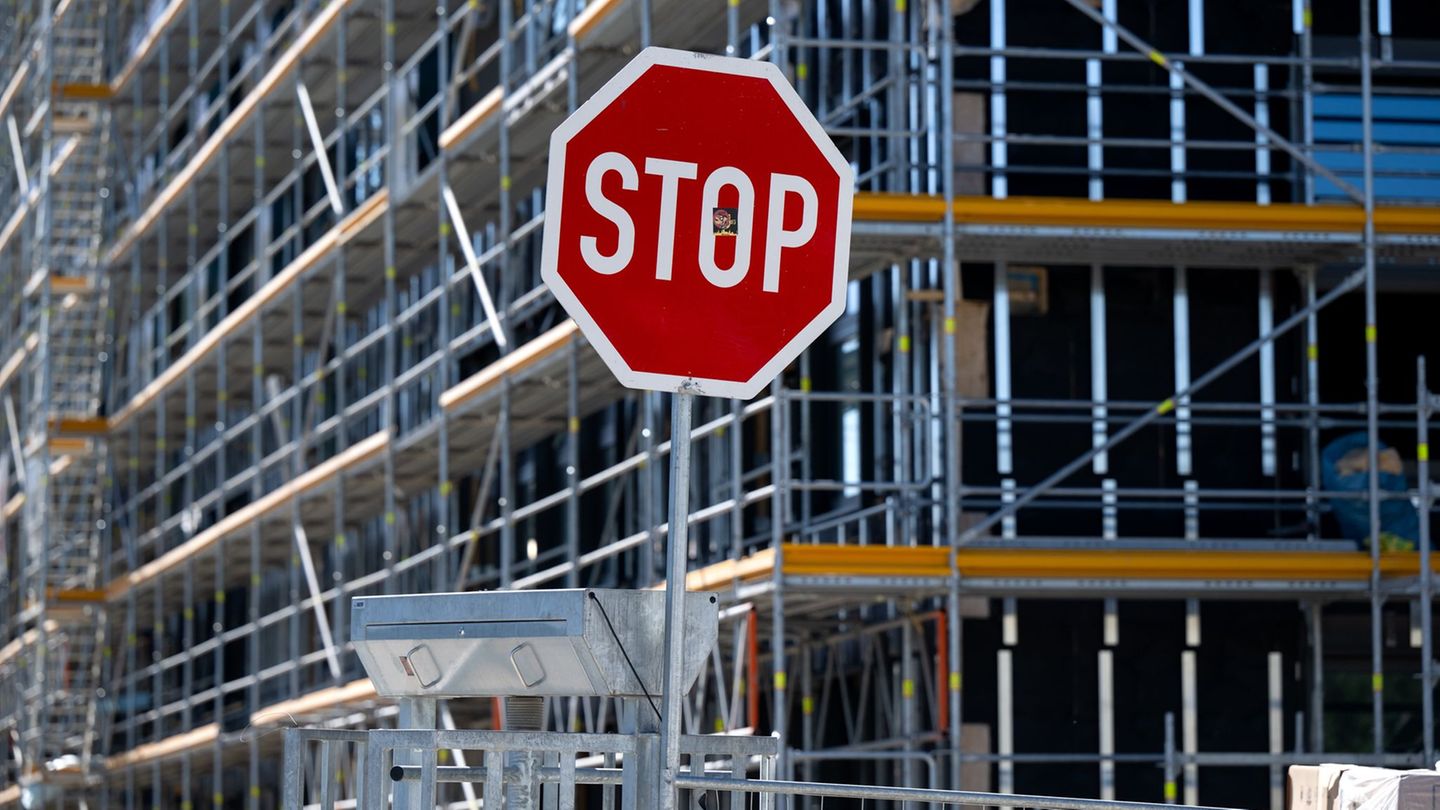Cloudy economic prospects
Dleed in spring – customs dispute brakes economy
Copy the current link
Add to the memorial list
At the start of the year, there was still a small ray of hope for the German economy. But the straw fire could have already gone out again. But there are also glimmer of hope.
The mini growth at the beginning of the year should only have been a straw fire: According to the Bundesbank, the exporting nation Germany threatens the next setback: “In the second quarter, the German economy could be roughly on the spot.”
Higher tariffs on imports to the USA are an additional burden for Germany’s exporters who have to deal with weak demand on the world markets anyway. The strengthening of the euro as a result of US trade policy also increases products from companies from the euro area on the world markets. This could dampen the exports of goods “made in Germany” and thus the local economic growth.
“German economy slowly comes back”
But there are glimmer of hope: the mood in the domestic economy improved in May. The IFO business climate increased the fifth month in a row and reached the highest value with 87.5 points since June 2024.
“The recently increased uncertainty among the companies has decreased something,” IFO President Clemens Fuest concluded the result of the latest survey in his institute among around 9,000 companies. “The German economy slowly comes back.”
Hope in important industries
Mechanical engineering also sees the latest export data in the industry as a sign of stabilization: In March, exports were nominal at 17.9 billion euros by 1.3 percent above the level of the same month. The industry had previously reported increasing number of order.
“March gives hope that the downward trend will weaken somewhat – but there can be no question of the all -clear,” commented the chief economist of the industry association VDMA, Johannes Gernandt. Due to a weak annual start, the exports of the mechanical engineers remained 3.6 percent behind the previous year despite the encouraging March figures in the first quarter. Adjusted for price increases (real) the gap is 5.4 percent.
Further away from the economic flaut
For the German economy as a whole, no rapid way out of the tough growth weakness is not a quick way out. The forecasts for 2025 have recently been reduced in rows: the “economy methods”, the International Monetary Fund (IMF) and the EU Commission expect a stagnation of the German economy. It would be the third year in a row for Europe’s largest economy after two years of recession.
After all, in the first three months of the current year, the German economy has grown by 0.2 percent to the previous quarter – thanks to increasing investments and higher consumer expenditure of consumers. This Friday, the Wiesbaden statisticians explain exactly how the economy is the economy with the details of the gross domestic product (GDP) of the first quarter.
Planning uncertainty and restraint for investments
Overall, US President Donald Trump’s leaking customs policy causes a lot of uncertainty, which is why companies reserve investments. Federal Finance Minister Lars Klingbeil sees positive signals in the customs conflict after talks in the circle of the seven large industrialized countries (G7). He perceived his American counterpart Scott Bessent as very constructive and solution-oriented, said the SPD politician on the sidelines of a meeting of the G7 Finance Minister in the Canadian holiday resort Banff: “This is a good sign.”
The chief economist at Dekabank, Ulrich Kater, remains skeptical: “The mood of German companies still hangs like a puppet on the threads of Donald Trump’s trade policy.” In the next few months it will be shown “what damage (…) the global loss of trust has already caused the United States”.
Planned billion -dollar investment as an economic stimulus program
Economic impulses in Germany – probably only from 2026 – the Bundesbank expects the planned measures of the new federal government: lower energy costs and corporate taxes, more flexible labor law, less bureaucracy.
The planned loan -financed billion dollar investments in infrastructure and defense are likely to ensure more growth. “Due to the relatively good starting point of the state finances, significantly higher deficits are easy to cope with,” the Bundesbank affirmed.
However, the federal and state governments should be prepared for “that the overall deficits have to decrease significantly again in the further course,” warns the Bundesbank. “In the announced further reform of the debt brake, solid state finances and the goals of the EU rules can again be anchored through binding credit boundaries in the Basic Law.”
dpa
Source: Stern

